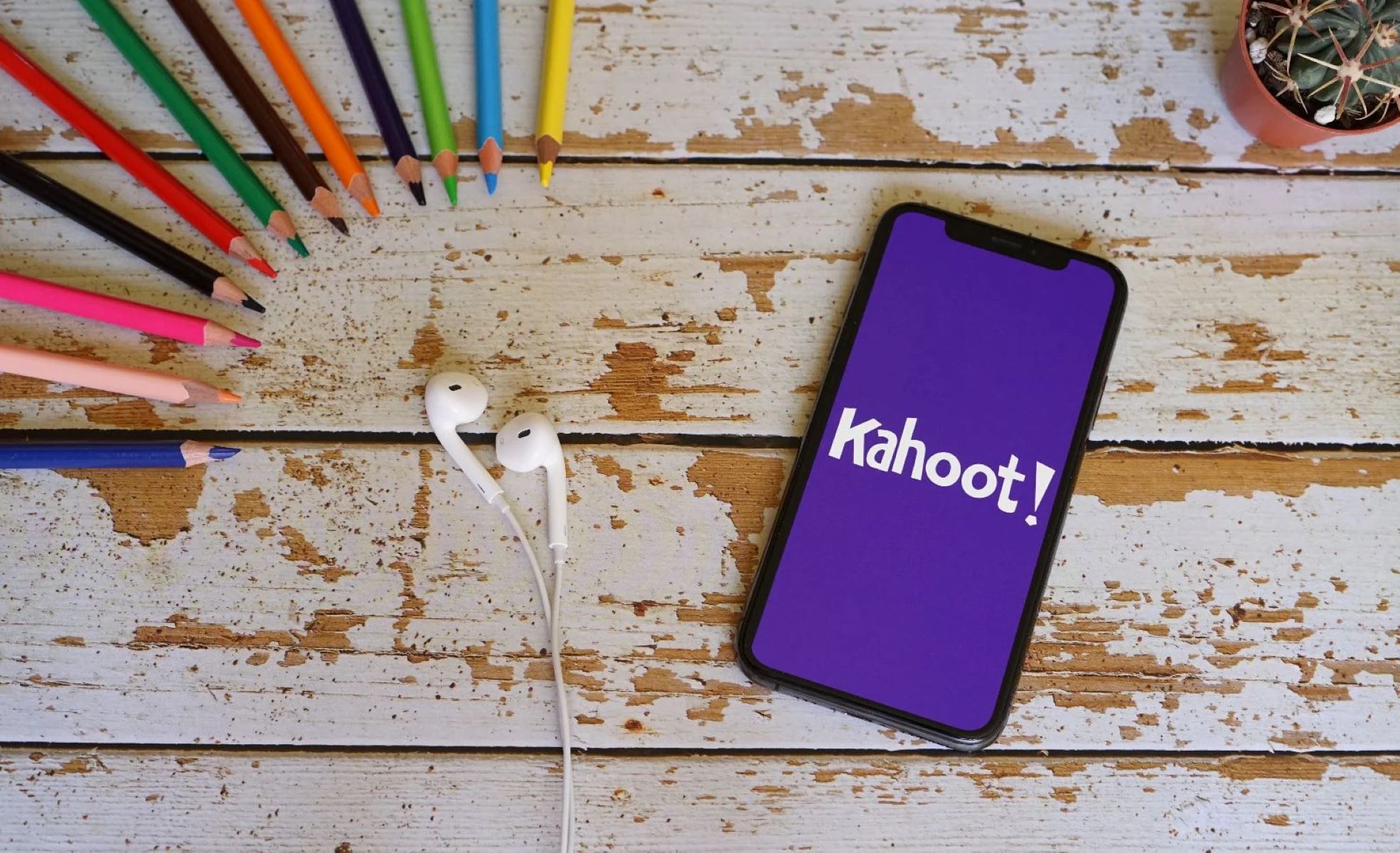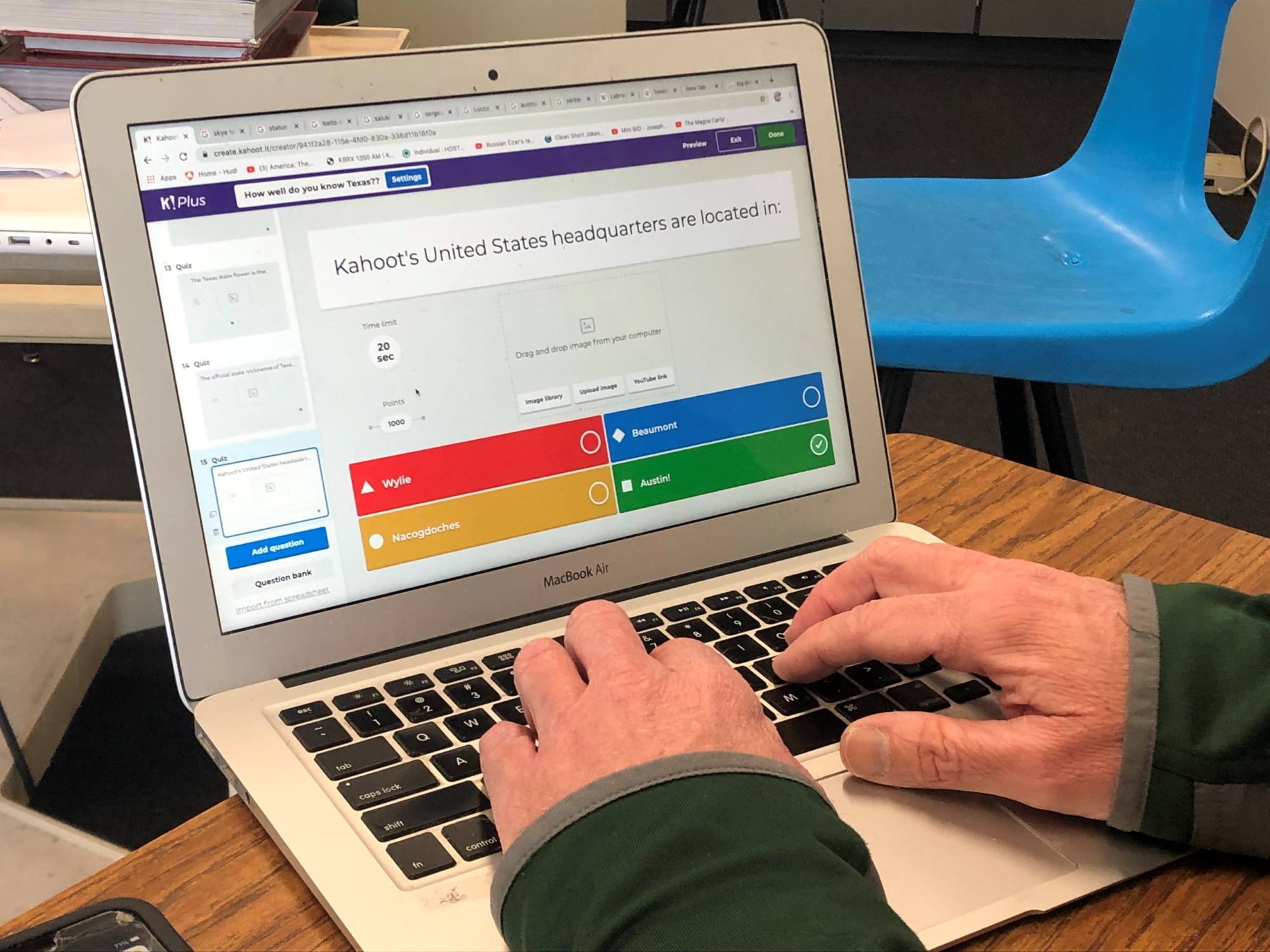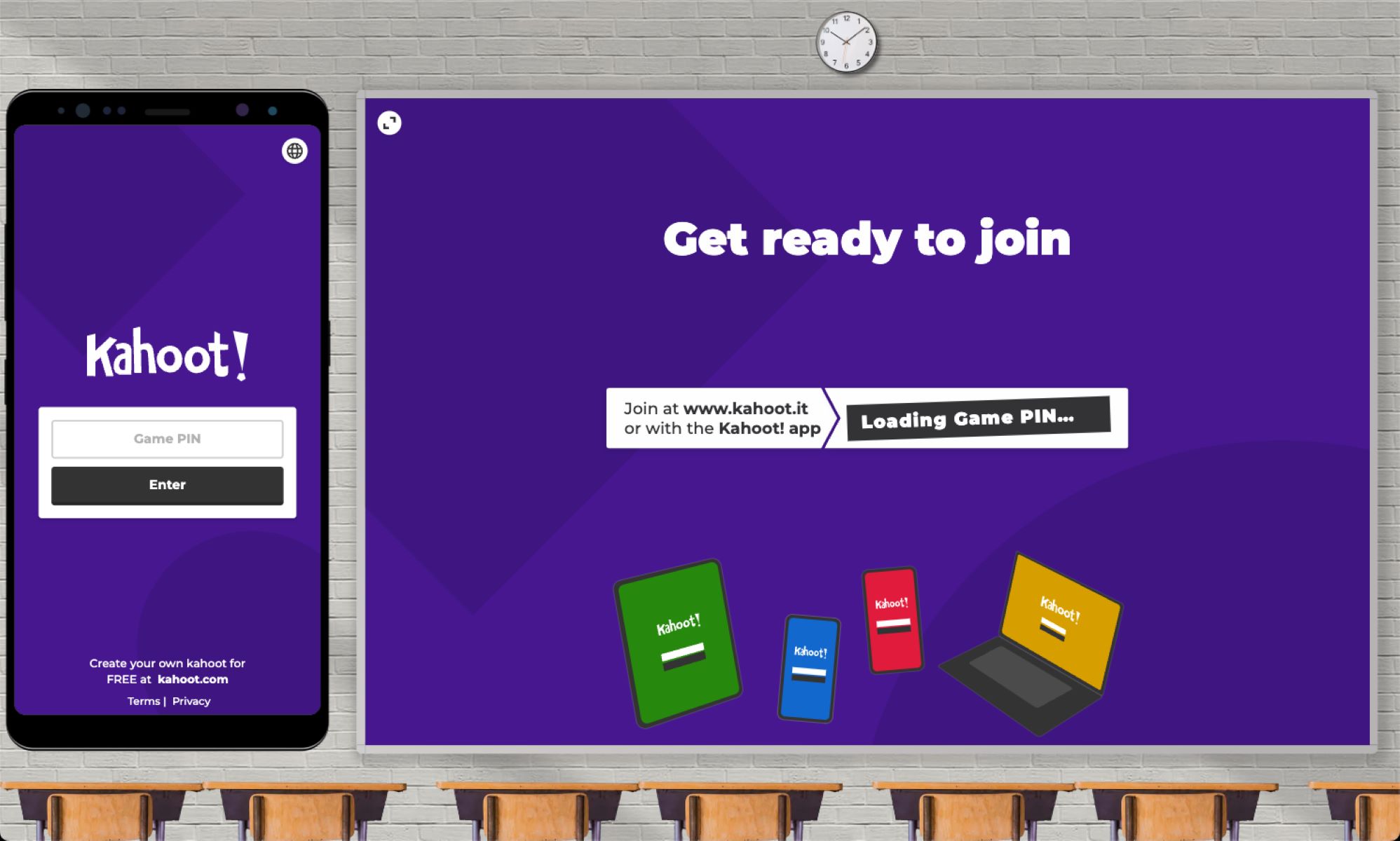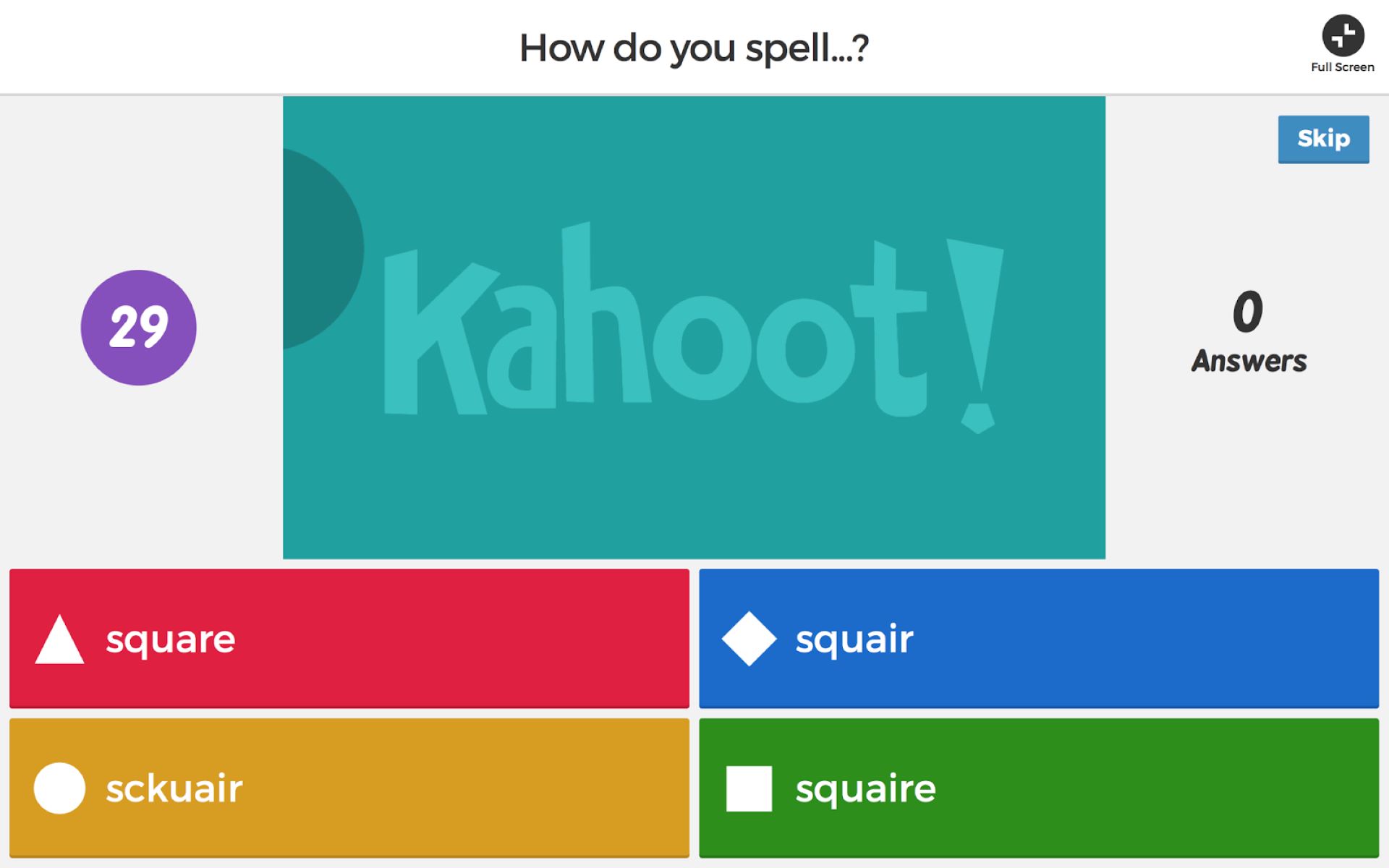Introduction
When it comes to online learning platforms, Kahoot is a name that often comes up. With its interactive quizzes, engaging games, and flashy design, it has gained popularity among educators and students alike. However, the question remains – is Kahoot really as good as it appears to be?
While Kahoot certainly has its merits, there are several reasons why it may not be the ideal choice for educational purposes. In this article, we will explore the various drawbacks and limitations of Kahoot that make it less effective for learning and teaching.
Before delving into the details, it’s important to acknowledge that Kahoot can be a fun and entertaining tool for short, informal quizzes or review sessions. Its gamified approach and competitive element can get students excited and motivated. However, when it comes to serious educational content and long-term learning objectives, Kahoot falls short in several key areas.
Let’s take a closer look at some of the common issues that educators and students face when using Kahoot as a learning platform.
The Distractions and Noise
One of the biggest drawbacks of using Kahoot as a learning tool is the potential for distractions and noise. While the lively and interactive nature of Kahoot may initially seem appealing, it can quickly become overwhelming in a classroom setting.
With Kahoot, students are presented with vibrant visuals, catchy music, and a fast-paced game format. While these elements are designed to make learning fun, they can also create a highly stimulating environment that makes it difficult for students to focus on the content being presented.
Additionally, Kahoot quizzes often involve a competitive element, with students racing against each other to answer questions correctly and earn points. While competition can be motivating for some, it can also lead to a sense of anxiety and pressure for others. This pressure can hinder learning and discourage participation among students who may not feel as confident or quick in their responses.
Furthermore, the noise level in a classroom can skyrocket during a Kahoot session. The combination of music, cheers, and constant commentary from students can make it challenging for the teacher to maintain control and provide clear instructions. This can disrupt the learning environment and make it difficult for students to fully engage with the material.
In summary, while the lively and interactive nature of Kahoot may seem enticing, the potential for distractions and noise can detract from the overall learning experience. Educators should carefully consider whether the benefits of engagement and entertainment outweigh the potential drawbacks and impact on focus and comprehension.
Lack of Individual Learning
One of the major limitations of using Kahoot as a learning platform is its lack of focus on individual learning. While Kahoot is designed to engage a large group of students simultaneously, it often fails to address the unique learning needs and preferences of each student.
In a Kahoot session, the questions are typically multiple-choice, which means that students are provided with a limited set of options to choose from. This format does not allow for open-ended responses or deeper critical thinking. Students are forced to select one of the given answers, which may not fully reflect their understanding or knowledge on the topic at hand.
Additionally, Kahoot quizzes are often conducted in a fast-paced manner, where speed and accuracy are prioritized. This focus on speed can create an atmosphere where students feel rushed and pressured to answer quickly, rather than taking the time to fully process the question and think critically about their response.
Furthermore, Kahoot does not provide individualized feedback to students. After each question, the correct answer is revealed, but there is no opportunity for students to understand why their chosen answer was incorrect or to receive personalized guidance for improvement. This lack of individual feedback can limit the effectiveness of Kahoot as a tool for personalized learning.
Overall, the lack of emphasis on individual learning within Kahoot quizzes can be a significant drawback, as it does not allow for tailored instruction or address the unique needs and learning styles of each student. Educators should consider supplementing Kahoot with other instructional strategies that provide more individualized feedback and opportunities for deeper learning.
Inequality among Students
Despite its interactive and engaging nature, Kahoot can inadvertently contribute to inequality among students. While it may seem like a level playing field, there are a few factors that can create disparities and hinder equitable participation in Kahoot sessions.
Firstly, the competitive nature of Kahoot can create an imbalance among students. Those who are more quick-witted or have prior knowledge on the topic being covered may have an advantage over their peers. This can lead to a sense of discouragement and disengagement among students who consistently fall behind or struggle to keep up.
Moreover, Kahoot heavily relies on technology and internet access. Unfortunately, not all students have equal access to these resources. Students from low-income backgrounds or underserved communities may not have reliable internet access or the necessary devices to participate effectively in Kahoot sessions. This creates a digital divide and further exacerbates existing educational inequalities.
Furthermore, Kahoot quizzes tend to favor students who perform better under time pressure. Some students excel in reflective and deliberate thinking, requiring more time to ponder and process their responses. By prioritizing speed, Kahoot may inadvertently disadvantage these students, potentially undermining their learning experience and sense of achievement.
Lastly, Kahoot provides little opportunity for students to contribute and share their own knowledge and insights beyond the limitations of multiple-choice questions. Students who possess a deeper understanding of the topic or have alternative perspectives may not be adequately represented or given a chance to showcase their knowledge in Kahoot quizzes.
Overall, the competitive nature, reliance on technology, time constraints, and limited options for student input can contribute to inequality among students when using Kahoot. Educators must be mindful of these potential disparities and find ways to create more inclusive and equitable learning environments alongside the use of Kahoot.
Limited Time for Reflection
One of the key limitations of using Kahoot as a learning platform is the limited time for reflection. Kahoot quizzes are designed to be fast-paced and entertaining, with a focus on quick responses and immediate feedback.
While this may create an energetic and engaging atmosphere, it leaves little room for students to pause and reflect on the questions being presented. Reflection is an important aspect of the learning process, allowing students to think critically, connect ideas, and deepen their understanding.
By prioritizing speed and accuracy, Kahoot encourages students to choose the first answer that comes to their mind without fully considering all the options or contemplating the reasoning behind their choices. This can hinder the development of critical thinking skills and limit the depth of understanding that students can achieve.
In addition, the fast-paced nature of Kahoot quizzes can be particularly challenging for students who require more time to process information or who benefit from deliberate thinking. These students may feel rushed or pressured to quickly generate a response, which can heighten anxiety and hinder their ability to think critically.
Furthermore, the lack of time for reflection also limits the opportunity for students to ask clarifying questions or seek additional information. The rapid-fire format of Kahoot does not provide space for students to delve deeper into a topic or engage in meaningful discussions with their peers.
Overall, the limited time for reflection in Kahoot quizzes can inhibit the development of critical thinking skills and hinder the depth of understanding that students can achieve. Educators should consider incorporating additional activities or discussions that allow for deeper reflection and contemplation alongside the use of Kahoot.
Gamification as a Disadvantage
One of the aspects that sets Kahoot apart is its gamified approach to learning. While gamification can be a powerful tool for engaging students, it also comes with its own disadvantages and limitations.
One potential disadvantage of gamification in Kahoot is the potential for surface-level learning. The competitive nature and excitement of the game can sometimes overshadow the actual content being taught. Students may focus more on earning points and winning rather than on acquiring a deep understanding of the material.
Additionally, gamification in Kahoot can create a high-stress environment for some students. The pressure to perform well and outscore their peers can lead to increased anxiety and a fear of making mistakes. This can hinder learning and discourage students from fully engaging with the material.
Furthermore, gamification can inadvertently promote a culture of “gaming the system.” Students might resort to memorization techniques or strategies that help them quickly guess the correct answers rather than truly comprehending the subject matter. This approach can undermine the purpose of education, which is to foster critical thinking and meaningful learning.
Another disadvantage of gamification in Kahoot is the potential for students to become overly dependent on external rewards. Kahoot’s point system and leaderboard can create a reliance on extrinsic motivation, where students are driven solely by the desire to earn points or receive recognition. This can diminish the intrinsic motivation that comes from a genuine interest in the subject matter.
Lastly, the gamified approach in Kahoot may not suit the learning preferences and styles of all students. While some learners thrive in competitive and fast-paced environments, others may prefer quieter, more reflective learning experiences. By solely relying on gamification, Kahoot may inadvertently exclude or alienate certain students from fully participating and benefiting from the learning process.
Overall, while gamification can be an effective strategy for engaging students, it also carries certain disadvantages in the context of Kahoot. Educators should carefully consider the balance between game elements and meaningful learning in order to ensure that students’ learning experiences are well-rounded and meet their diverse needs and preferences.
Limited Content and Subject Options
While Kahoot offers a range of pre-made quizzes and quizzes created by other users, there is a notable limitation when it comes to the availability of content and subject options. This can hinder educators who want to use Kahoot as a comprehensive learning tool across different subjects and topics.
Kahoot quizzes are primarily focused on factual recall and multiple-choice questions. This format is well-suited for testing knowledge and retention of information, but it may not effectively assess critical thinking, problem-solving, or higher-order cognitive skills. As a result, educators who want to assess and reinforce these critical skills may find Kahoot lacking in terms of content options.
Furthermore, the content available on Kahoot may not align with specific curriculum standards or learning objectives. Educators often need to spend time creating their own quizzes or searching for suitable content that covers the specific topics they want to teach. This additional effort can be time-consuming and may not always yield satisfactory results.
In addition, Kahoot focuses primarily on academic subjects such as math, science, and language arts. While these subjects are important, other areas of study, such as social sciences, fine arts, or vocational education, may not have as many available quizzes or Kahoot may not lend itself well to assessing knowledge in these areas effectively.
Moreover, Kahoot may not cater to the diversity of languages and cultural contexts in educational settings. The majority of quizzes available on Kahoot are in English, which can exclude non-English speaking students or educators from fully utilizing the platform. This limits its accessibility and usefulness in multicultural and multilingual classrooms.
In summary, while Kahoot offers a wide range of quizzes, it falls short in terms of providing comprehensive content and subject options. Educators may need to supplement Kahoot with other resources or create their own quizzes to ensure that it aligns with their desired curriculum and learning objectives.
Security, Privacy, and Data Concerns
While Kahoot provides an engaging learning experience, it is important to address the concerns surrounding security, privacy, and data protection. As an online platform, Kahoot collects and stores student data, which presents potential risks and privacy implications.
Firstly, there is always a risk of data breaches and unauthorized access to sensitive student information. As students participate in Kahoot quizzes, their responses, usernames, and other personal data may be stored on Kahoot’s servers. Inadequate security measures can leave this data vulnerable to hacking or misuse, compromising the privacy of students and their families.
In addition, when students use the platform, they may unwittingly disclose personal information while interacting with others. This can include their names, school information, or even location data. Without clear guidelines and oversight, this information can be accessed by unauthorized individuals or used inappropriately.
Furthermore, Kahoot’s commercial nature raises concerns about data usage and third-party advertising. With the collection of student data, there is a potential risk that this data could be shared with external organizations for targeted advertising or other purposes. This raises ethical concerns and compromises the privacy of students and their families.
Moreover, when using Kahoot in educational settings, it is important to obtain proper consent and comply with regulations regarding data protection and privacy. Educators should be aware of the legal requirements specific to their region and take necessary precautions to ensure compliance and protect student data.
Lastly, there is the issue of student engagement and data ownership. With Kahoot, students are actively generating data while participating in quizzes and interacting with the platform. It is important to consider who owns this data and how it may be utilized or monetized by Kahoot or other entities.
In summary, while Kahoot offers an interactive learning experience, it is crucial to address the security, privacy, and data concerns associated with the use of the platform. Educators and stakeholders must be vigilant in safeguarding student data, ensuring compliance with regulations, and taking necessary measures to protect the privacy of students and their families.
Conclusion
While Kahoot may initially seem like an exciting and innovative learning platform, it is important to consider its drawbacks and limitations. The distractions and noise, lack of individual learning, inequality among students, limited time for reflection, gamification as a disadvantage, limited content and subject options, and security, privacy, and data concerns are all factors that educators should carefully consider when deciding whether to incorporate Kahoot into their teaching practices.
While Kahoot can be a valuable tool for engaging students and promoting active participation, it is crucial to strike a balance between entertainment and meaningful learning. Educators should supplement Kahoot with other instructional strategies that allow for deeper exploration, critical thinking, and individualized instruction.
Moreover, while Kahoot quizzes can be a fun and interactive way to assess knowledge, they should not be the sole measurement of student learning. It is important to utilize a variety of assessment methods to ensure a comprehensive understanding of students’ knowledge and skills.
Additionally, educators should be mindful of the potential inequalities that can arise with the use of Kahoot. Efforts should be made to create an inclusive learning environment that caters to diverse learning styles, addresses individual needs, and promotes equitable participation.
Lastly, it is crucial to prioritize the security and privacy of student data when using an online platform like Kahoot. Educators should take necessary precautions to protect student information, comply with data protection regulations, and obtain informed consent from students and their families.
In conclusion, while Kahoot can be a valuable tool for engagement and interaction, it is crucial for educators to be aware of its limitations and potential drawbacks. By considering these factors and making informed decisions, educators can maximize the benefits of Kahoot while ensuring a well-rounded and effective learning experience for their students.

























